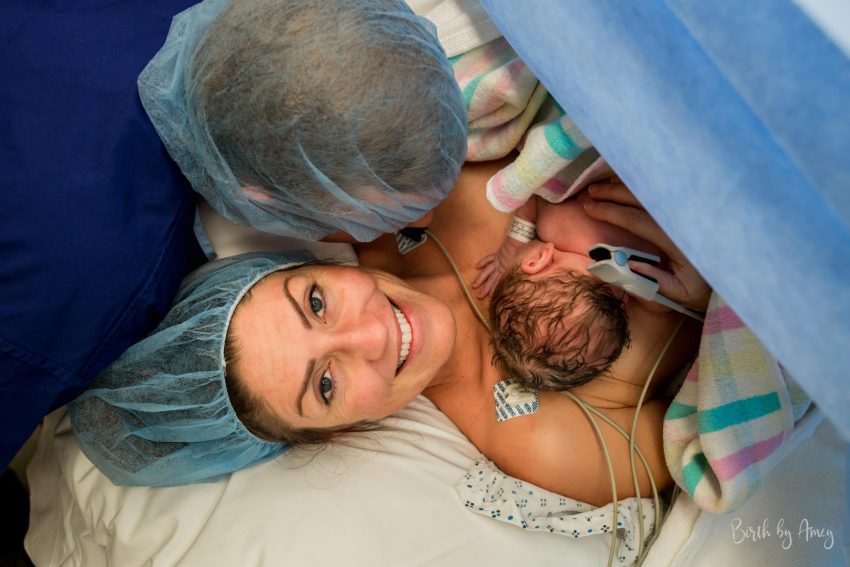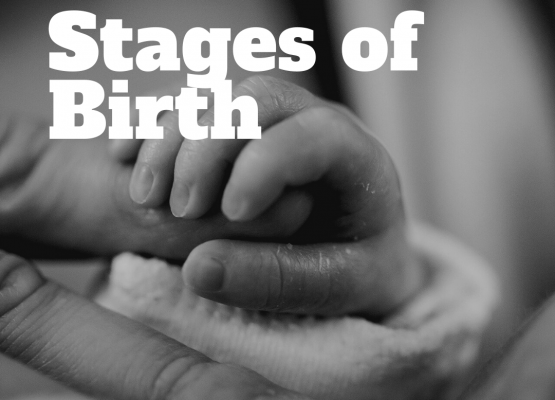According to W. H. O there are many benefits for the mother and the baby resulting from the delayed cord clamping (not earlier than 1 min after birth). As mentioned it improves maternal and neonatal health and nutrition outcomes, helps baby’s hemoglobin levels at birth and improves iron stores for up to 6 months post-birth, preventing iron deficiency anemia and also decreases the need for blood transfusion for preterm babies. In preterm infants, rates of intraventricular hemorrhage and necrotizing enterocolitis are lower, and fewer newborns require transfusion when delayed umbilical cord clamping is employed. Other big health organizations as RCOG and ACNM agreed that there are only benefits in delayed cord clamping. Specifically, The Royal College of Obstetricians and Gynaecologists also recommends deferring umbilical cord clamping for the healthy term and preterm infants for at least 2 minutes after birth. Additionally, the American College of Nurse-Midwives recommends delayed umbilical cord clamping for the term and preterm infants for 2–5 minutes after birth.
The umbilical cord has 2 arteries and a vein.
In the umbilical vein, oxygenated blood flows from the placenta to the fetus, passes into the fetal cardiovascular system and then, after it circulates within the baby’s body, returns to the placenta through the 2 umbilical arteries to “oxygenate” again, to return to the baby in the same way.
Some of the benefits during DCC(Delayed Cord Clamping) even if that happens after natural birth or a cesarean section are :
- The baby will have a larger blood volume, more iron and less chance of developing anemia.
- The baby will have more birth weight.
- The tummy tuck will have a reduced risk for intra-abdominal hemorrhage and late sepsis.
- The baby continues to get oxygen.
What is umbilical cord clamping and is it possible to try it during a c- section?
Delayed umbilical cord clamping is a straightforward process that allows placental transfusion of warm, oxygenated blood to flow passively into the newborn. Waiting one minute allows your baby to receive about 80 milliliters (mL) of blood from the placenta. After three minutes, this increases to 100 mL. As mentioned, after delivery, the newborn may receive up to 30 mL/kg blood from its placental circulation within 3–5 min, contributing 75 mg iron which is equivalent to the infant’s requirements for 3–4 months. For infants that born vaginally found that placing them direct to the mother’s chest as skin-to-skin care did not have a lower volume of blood transfusion. But also in the case of cesarean delivery, the newborn can be placed on the maternal abdomen or legs or held by the surgeon or assistant at close to the level of the placenta until the umbilical cord is clamped.
As we mention before delayed cord clamping has a minimal negative impact on the mother’s health when the baby is delivered vaginally, and until the last years it is known that affects mother’s health (and especially the amount of blood a mother loses during delivery when the baby delivered by cesarean section). Traditionally in the case of c- section the umbilical cord used to cute immediately at birth.
Regarding the newborn was delivered with a c- section no significant differences in hemoglobin after birth, Apgar score at first and five minutes after birth and the occurrence of neonatal hyperbilirubinemia or application of phototherapy. A longer duration of placental transfusion after birth also facilitates the transfer of immunoglobulins and stem cells, which are essential for tissue and organ repair to the newborn. As we mention before delayed cord clamping has a minimal negative impact on the mother’s health when the baby is delivered vaginally, and until the last years it is known that affects mother’s health (and especially the amount of blood a mother loses during delivery when the baby delivered by cesarean section). Traditionally in the case of c- section the umbilical cord used to cute immediately at birth.
According to a small review of Sun M et al, 2017, they tried delayed cord clamping within 60 seconds in 338 women that gave birth under c- section. As a result, it mentioned that even in this small period of 30 seconds time the baby has higher iron reserves at 4 months. Newborns subjected to delayed cord clamping (DCC) have higher hemoglobin (Hb) concentrations at 24–48 hours of life, and improved iron stores at 4–6 months. In fact, it found that those babies had iron statuses comparable with those whose cord clamping was delayed by 3 minutes after vaginal delivery. It’s important to note, though, that for the prevention of postpartum hemorrhage, the WHO recommends delayed cord clamping equally for both vaginal and cesarean section deliveries. That means there’s definitely one benefit of it confirmed.
Also, England’s National Institute of Health and Excellence (NICE) but also the World Health Organization, mentioned that the only case during a c section it is not possible to have a delayed cord clamping, it is when there is doubt about the integrity of the placenta or umbilical cord or if the newborn has a heart rate below 60 bpm, which does not improve. These cases are extremely few.
How Delayed Cord Clamping In C-Section Works?
There are different ways delayed cord clamping can be achieved in a cesarean section.
The doctor can make the incision on your belly and deliver only the baby’s head initially. When the baby starts breathing and crying, it’s eased out of the incision and the cord remains intact till delivery is complete.
- Alternatively, it can be achieved by having a lotus birth. In this, the baby is delivered completely with the placenta and cord still attached to it. The lotus birth can be completed by waiting for the cord to fall off naturally after some days or it can be cut after a few minutes.
- The ACOG recommends that in order to promote skin-skin contact along with delayed cord clamping in a c-section, the baby can be placed on the abdomen or legs of the mother. Alternatively, the surgeon can hold the infant close to the level of the placenta until the cord is clamped.
- Recent research shows that with c-sections, the physician shouldn’t just delay cord clamping, he should also manually milk the cord and push more blood into the baby. This is because the uterus doesn’t contract the same way as in vaginal delivery and the transfer of blood needs to be helped along. This process is called cord milking and should be considered by a physician along with delayed cord clamping when a cesarean birth is underway.
- The positioning of the baby during delayed cord clamping is irrelevant. Studies have shown that there’s no difference in the amount of extra blood that gets passed to the baby whether it’s placed on the mother’s abdomen or held at a vaginal level.
During which cases it is not possible some babies can’t have DCC?
- Monochorionic twins (twins who share the same placenta) are the only babies who absolutely should not have deferred cord clamping. Both two babies are connected via one single placenta and there is a small risk that blood could move from one twin into the other at the time of delivery. That means that one of the two twins will have too much blood than the other.
- An emergency case that either the mother or the baby during the delivery time, it is needed to start resuscitation or other medical treatment can start as soon as possible.
- If there is bleeding from a tear in the cord or placenta, DCC will not work and the cord will be clamped immediately to stop the bleeding. It may also be technically difficult to perform in some situations, such as in twins (who do not share a placenta) or if the cord is very short.
- Diagnosed abnormalities to babies such as syndromes and cases that may need medical intervention immediately after birth may increase the risks and decrease the benefits of DCC.
- Also, babies at high risk of a blood-based infection (such as newly diagnosed HIV or hepatitis) may have individual plans made to clamp the cord immediately. However, most mothers who have low viral loads can safely have DCC and DCC is recommended by the World Health Organisation, even when mothers are HIV positive.
Delayed cord clamping is just one more example of how the medical establishment is changing birthing procedures to be more mom and family-centered. Include in your birth plan and remember to discuss with your healthcare professional your desire for delayed cord even if you are about to have a cesarean section.
- Deferred cord clamping- Maternity information, NHS, University Hospital of Southampton
- americanpregnancy.org/labor-and-birth/delayed-cord-clamping-risks-benefits/ www.cordclamping.org/
- Delayed cord clamping during elective cesarean deliveries: results of a pilot safety trial, Chantry et al. Maternal Health, Neonatology, and Perinatology (2018) 4:16 https://doi.org/10.1186/s40748-018-0083-3
- Women’s Health Care Physicians.” Delayed Umbilical Cord Clamping After Birth – ACOG. N.p., n.d. Web. 03 Feb. 2017
- Optimal Timing of Cord Clamping for the Prevention of Iron Deficiency Anaemia in Infants.“WHO. World Health Organization, n.d. Web. 03 Feb. 2017




